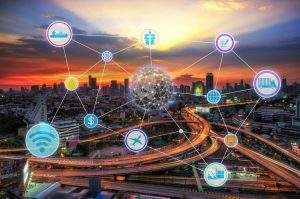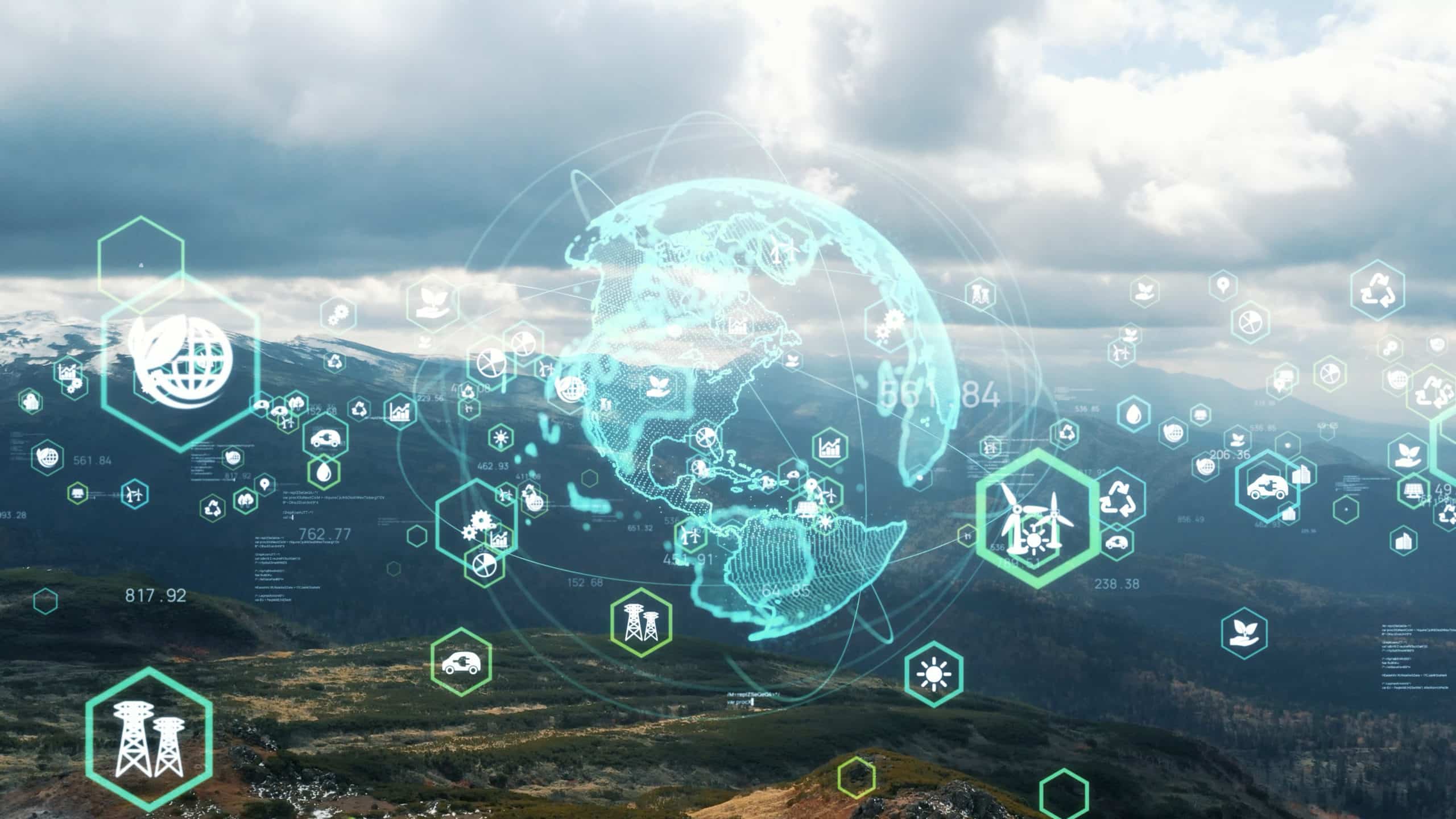It’s impossible to stop the future from coming, but some find the sheer scale of smart city technology quite daunting. Overwhelmed city planners are left to wonder: should we become a smart city? And what does that even mean?
Famed futurist Dr. Michio Kaku is known to say: “The internet will be everywhere and nowhere.” This quote is particularly relevant when it comes to smart cities. Our cities are evolving, with planners implementing technologies that improve how people relate to the built environment. An important component of that is gathering data on how people live without them realizing it. Planners can then translate data into actions that will measurably improve people’s quality of life. Internet technology, along with Artificial Intelligence (AI) and the Internet of Things (IoT) will soon be embedded into our lives in such a way that we no longer realize they are there. Smart city technology will be everywhere and nowhere at the same time.

What is a Smart City?
First, a quick recap of what it means to be a smart city. While there is currently not a universally agreed-upon definition, smart cities are generally understood to be urban areas that have digital technology embedded into various functions and services for the purpose of gathering data that will promote more effective and efficient operations.
It’s difficult to develop a quantified definition because this is not an all or nothing approach. Some cities can only afford to apply digital technology to one or two areas, while other cities onboard more rapidly.
How Smart Cities Benefit Residents
Smart cities have the ability to be more responsive to people’s needs in real time, improving their overall health and happiness. For example, pollution is a well-known problem in many cities throughout the world. A smart city can mitigate pollution by remediating what causes it, such as cars idling in traffic. City planners can use sensors to gather information on driver data to develop more efficient traffic patterns, along with smart parking systems that can help people find and pay for parking more easily. Taking it a step further, smart cities can use technology to sense how the weather will affect air quality and could automatically respond to periods of higher pollution with smart air purification systems.
Better air quality is just one example of how residents stand to benefit from smart cities, but there are many more ways smart technology can be used to improve quality of life including better plans for housing, disaster prevention, energy efficiency and so much more.
How Smart Cities Benefit Local Government Agencies
While smart cities enhance livability and sustainability for residents, they can also boost productivity and save money on operations and management for government agencies. Examples include sensors that identify water leaks for immediate repair and can send alerts to the appropriate department or data-based systems for waste management and recycling that monitor how people work to identify areas that can be streamlined for greater operational efficiency.
There’s also potential economic benefit, as the amount of data gathered from resident’s behaviors could be helpful to small businesses or entrepreneurs seeking out ways to better serve people’s wants and needs. With the right systems in place, local government agencies could easily share this data to generate more jobs.
Additionally, data offered by smart cities is a way for governments to review policies and ensure they are still useful and applicable to how people are presently living their lives. For example, an increase in garbage could indicate the need to implement mandatory recycling in certain areas. Or an increase in car accidents around a busy intersection may reveal a problem with the existing traffic pattern.
The Role of Location Intelligence as a Smart City Technology
Location intelligence technology is the foundation of a smart city, as it’s the fastest and most reliable way to review exactly how cities are laid out, with the ability to apply multiple layers of spatial data to identify where smart city technology can and should be applied. All spatial information can be reviewed to provide needed context that will ensure the best possible outcomes.
A strong location intelligence platform will allow city planning boards to compile, visualize, and analyze spatial data to devise strategies that will meet key objectives. A location intelligence platform connects city departments with the information they need, including land use, waste management, transportation, utilities, energy-efficient buildings, and asset management. This information is constantly updated and readily available to any department when it’s needed.
So…Why Should Any City Become a Smart City?
Even small cities with limited budgets and small populations can benefit from smart technology. The key is identifying what sort of technology can and should be applied to the city’s biggest pain points. Location intelligence is an example of a technology that quickly delivers huge results and is easy to implement across various departments. Data overlaid on digital maps makes it easier to understand where the inefficiencies are and how to remediate them.
By 2030, 60% of the world’s population is expected to live in cities, and the quality of their lives will largely depend on how technology is applied now. We are still in the early stages of rolling out digital technologies meant to optimize the built environment. As local governments are able to collect and learn from the massive amounts of data delivered to them by smart city technology, they will only continue to improve how their cities operate.
